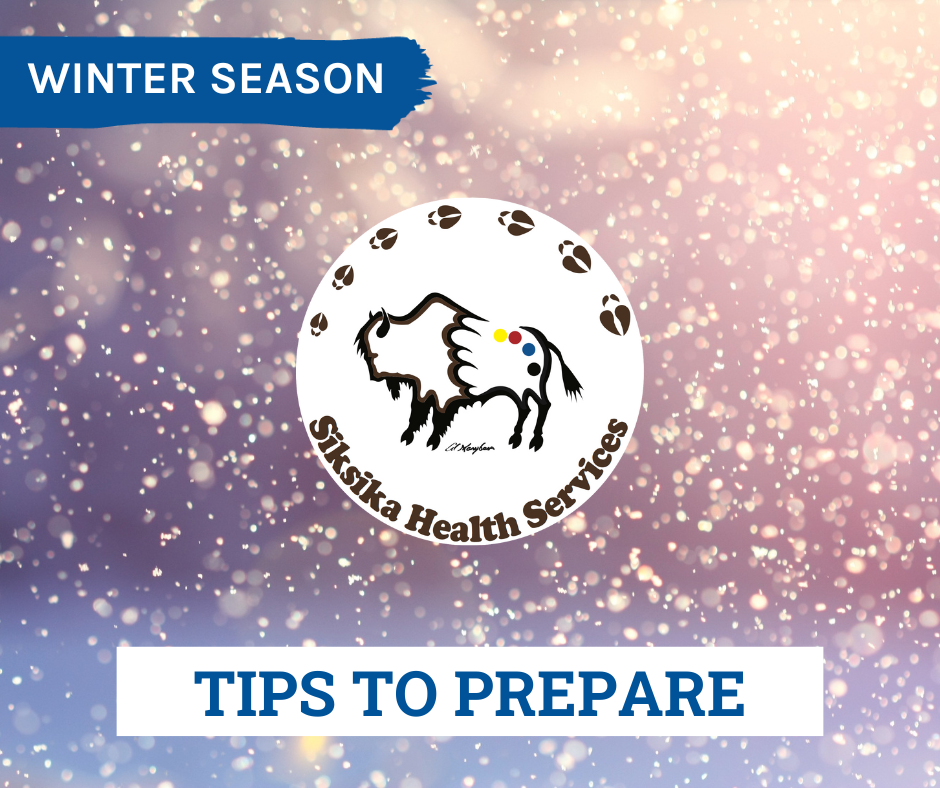
Tips to prepare for winter
Winter weather conditions in Siksika can quickly become dangerous with little or no warning. Here are some tips to prepare for the winter season and ensure you and your family are safe during the coldest of days.
General winter weather safety
Winter driving calls for extra care, even in normal winter conditions. Snow and ice can reduce tire traction on roads, and heavy or blowing snow can make visibility poor. Check out these safety tips for winter driving.
Whether you are shoveling or sliding, always dress warmly in cold temperatures and avoid over-exerting yourself. Your heart has to work harder to pump blood through your blood vessels when they are constricted by the cold. Over-exerting with the added stress could trigger a heart attack or stroke. Be heart smart in the winter.
Blizzard safety
When a blizzard begins, stay indoors and wait until it ends. If you must go outside, dress properly to stay warm. When it comes time to shovel yourself out after the storm, take your time to avoid exerting yourself. Check out these tips on how to prepare before a severe storm.
Planning ahead
Having a storm readiness plan in place saves valuable time when severe weather strikes. It is also important to maintain an emergency pack with a battery-powered flashlight, a radio, tools for emergency repair, ready-to-eat food, a first aid kit, blankets, and extra clothing. Keep your car gas tank full in case gas stations close down after a storm, and have some cash on hand in case bank machines and electronic payment methods are down. When a warning is issued, stay calm and follow your plan. Take advantage of Environment and Climate Change Canada’s Weatheradio service to be aware of and prepared for potential impending winter storms. Here is a link to create your emergency plan.
Staying warm
Dress warmly when you go outside during cold weather. Wear layers of clothing with a wind-resistant outer layer. You can remove layers if you get too warm, before you start sweating, or add a layer if you get cold. Wear warm socks, mittens, a hat and scarf. In extremely cold conditions, cover as much exposed skin as possible. If you get wet, change into dry clothing. You lose heat faster when you are wet.
Outdoor sports, such as sledding, snowmobiling and skating can be fun in the wintertime, but be sure to dress appropriately. Wear a facemask or goggles to protect your face from frostbite and windburn.
Be alert for signs of frostbite. Check for numbness or white areas on your face and extremities (ears, nose, cheeks, hands and feet). Get medical assistance immediately if you notice signs of confusion, slurred speech, stiff muscles or uncontrollable shivering. These are signs of hypothermia, a potentially fatal condition. Hypothermia occurs when your body loses heat faster than it can generate it.
Check the Environment and Climate Change Canada weather forecast before you go outside. Watch for wind chill or extremely cold temperatures. Wind chill can create dangerously cold conditions, but extremely cold temperatures can still be hazardous with little or no wind.
